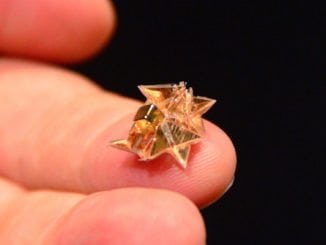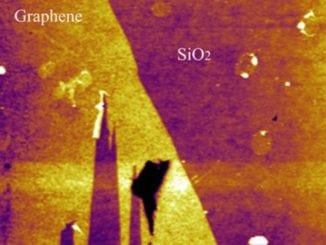I am a postgraduate researcher at the University of Leeds. I have completed my master's degree in the Erasmus Tribos program at the University of Leeds, University of Ljubljana, and University of Coimbra and my bachelor's degree in Mechanical Engineering from VTU in NMIT, India. I am an editor and social networking manager at TriboNet. I have a YouTube channel called Tribo Geek where I upload videos on travel, research life, and topics for master's and PhD students.
Cavitation wear
Table of Contents
Cavitation wear
Definition:
Cavitation wear is a type of wear on solid materials surface that is in contact with a liquid medium where the surface is damaged due to the collapse of liquid bubbles with zero/negative pressure. In cavitation, the cyclic formation takes place when the liquid flows in a diverging geometry that is from the region of higher pressure to the region of lower pressure. This type of wear is most seen in the mechanical components operating in liquid mediums such as the propeller in the ship, where the liquid emerges from the lower diameter region to the higher diameter [1]. The cavitation wear mechanism on steel is shown in Fig- 1.

Fig-1 The cavitation wear mechanism on steel [2].
Mechanism of cavitation wear:
The main reason for the formation of the cavitation wear is the liquid bubble collapsing on the surface of the solid, when it collapses the gas stored in the bubble hits the surface with zero or negative pressure. The region on which the bubble has collapsed will experience the stresses causing damage to the surface. This damage is called cavitation wear. Studying the mechanism of the liquid bubble collapse is very important to understand the extent of cavitation wear.
Mechanism of bubble collapse:
The liquid bubble moves in a diverging geometry, in the case of pipes i.e. from lower diameter to higher diameter pipe. It drops on the surface of the solid due to the pressure difference and when the bubble explodes and the liquid surrounding the bubble accelerates at first and decelerates sharply as the bubble collapse [3]. This generates the stresses at the surface of the collapse due to high pressure leading to surface damage. This mechanism of the bubble collapse is shown in Fig-2.

Fig-2 Mechanism of bubble collapse [1].
Type of cavitation:
Vaporous cavitation:
In this type of cavitation, the liquid bubble explodes abruptly due to the change in the liquid into vapor. This type of cavitation occurs when the pressure level is below the vapor pressure of the liquid. The cavitation wear is the feature of this vapor cavitation that erodes the material surface. In this case, tensile stress causes the liquid to boil, and then the compressive stresses cause the vapour bubble to collapse that causing the cavitation to wear from fluid to surface. The bubble collapse is shown in the Fig-3.

Fig-3 bubble collapse in vapour cavitation [4].
Gaseous cavitation:
It is a type of cavitation due to a diffusion process where the pressure falls below the gas dissolved in the liquid. This type of cavitation does not cause cavitation wear that leads to material erosion on the surface. This cavitation is slower compared to vaporous cavitation.
Cavitation wear resistance:
The cavitation wear is caused mainly by the liquid bubble collapse which if avoided can overcome the cavitation wear. However, it is highly impossible to avoid this negative press generated by the collapse on the surface. One of the basic features of cavitation is that it attacks the weakest phase of the materials hence the materials with desirable properties as to be selected in order to resist this wear. The materials like concrete are commonly used by reinforcing with steel fibers or polymers because of their strong phase that resists cavitation wear. Also, rubber is one of the materials which has good cavitation resistance due to the low modulus of elasticity, however, it cannot be used in high-temperature applications.
Methods to reduce cavitation wear:
The cavitation is caused due to the nonresistance properties of the materials to the impulse loads, at these points, the stresses are too high. Hence it is important for the materials to have good surface properties with a smooth surface finish which reduces the cavitation wear. If the surfaces are rough, then it creates the weaker points to attract the cavitation wear [5].
Also, the tensile stress of the fluid plays an important role in resisting the cavitation wear, the tensile stresses of the fluid can be controlled by various methods by altering the design of the machine components where the cavitation wear is predominant. Also using the fluid with lower viscosity, and low vapour pressure and increasing the fluid temperature can reduce the cavitation wear.
Cavitation research:
The research on cavitation wear was carried out based on various aspects of the parameters involved in causing the wear. In a study on the austenitic stainless steel of different grain sizes. G.Bregliozzi et.al. found the variations in pH resulted in variations in the cavitation wear [6]. The composites and oxide ceramics have a wide range of applications, however, they are limited because of the intensive cavitation. Zbigniew et, al., studied these materials and found that the cavitation wear is strongly dependent on the residual stress state of the materials [7].
Reference:
[1] Stachowiak, G.W. and Batchelor, A.W., 2013. Engineering tribology. Butterworth-heinemann.
[2] Borek, T.L.T.T.W., 2018. Influence of surface roughness on the cavitation wear of P265GH and X2CrNi18-9 steel cavitation generators. Communications, 20.
[3] A. Karimi and F. Avellan, Comparison of Erosion Mechanisms in Different Types of Cavitation, Wear, Vol.113, 1986, pp. 305-322.
[4] https://en.wikipedia.org/wiki/Cavitation
[5] P. Veerabhadra Rao, Evaluation of Epoxy Resins in Flow Cavitation Erosion, Wear, Vol. 122, 1988, pp. 77-95.
[6] Bregliozzi, G., Di Schino, A., Ahmed, S.U., Kenny, J.M. and Haefke, H., 2005. Cavitation wear behaviour of austenitic stainless steels with different grain sizes. Wear, 258(1-4), pp.503-510.
[7] Pędzich, Z., Jasionowski, R. and Ziąbka, M., 2014. Cavitation wear of structural oxide ceramics and selected composite materials. Journal of the European Ceramic Society, 34(14), pp.3351-3356.
Leave a Reply
You must be logged in to post a comment.
































I agree with your point of view, your article has given me a lot of help and benefited me a lot. Thanks. Hope you continue to write such excellent articles.